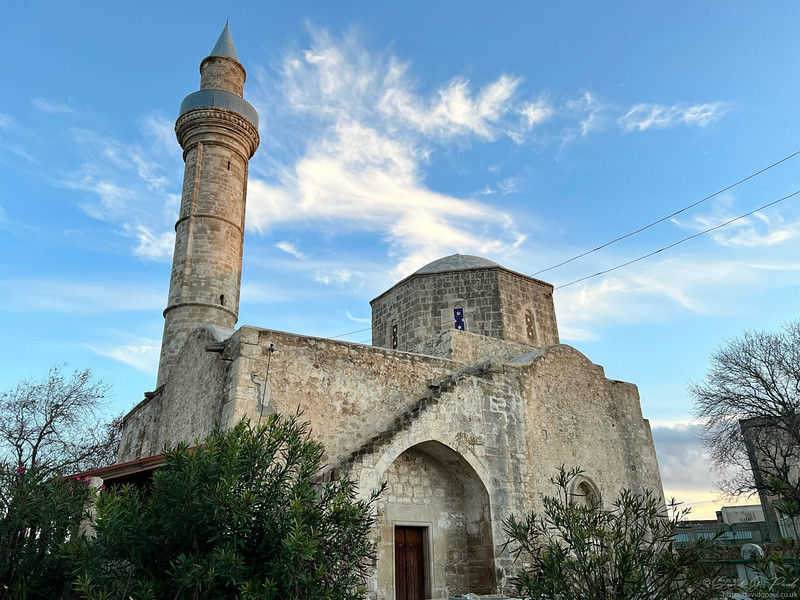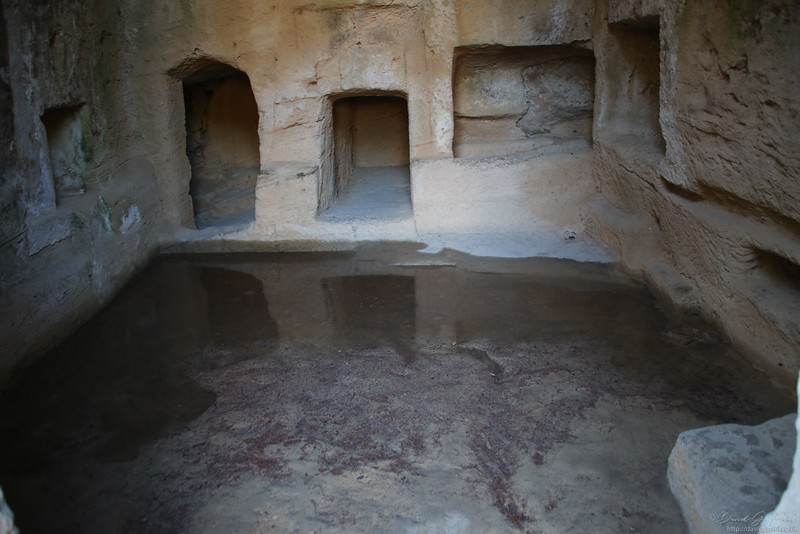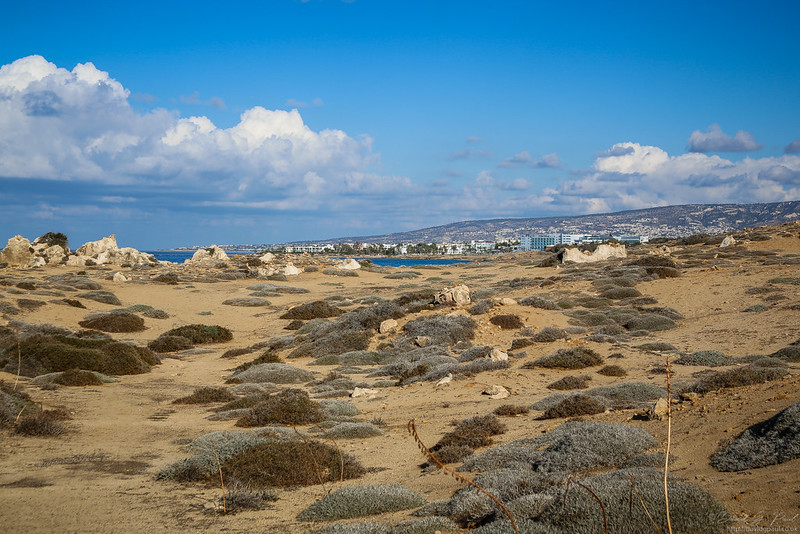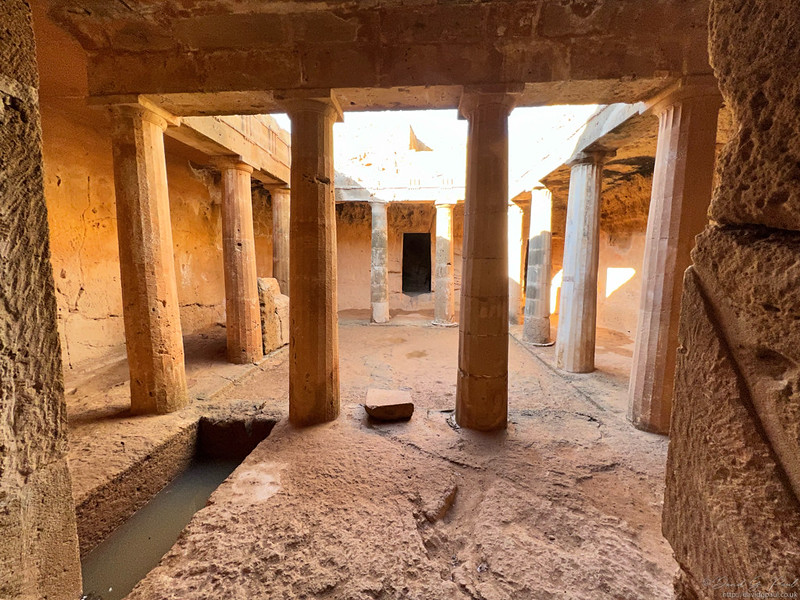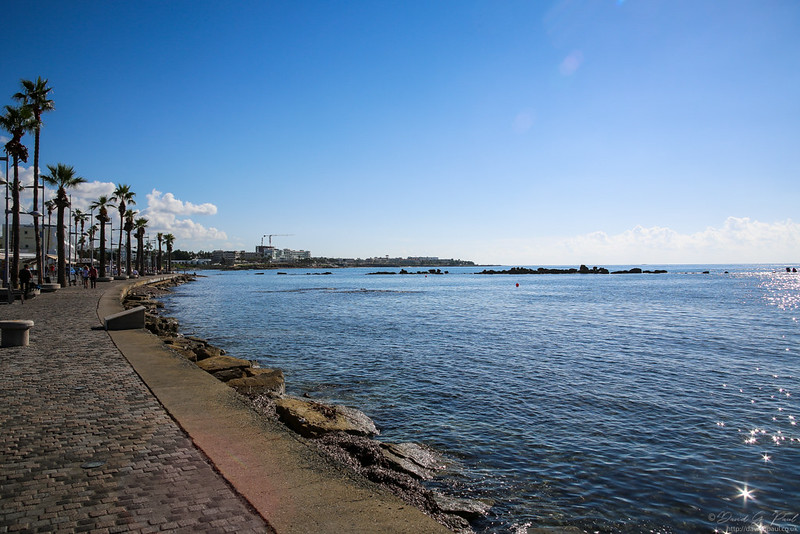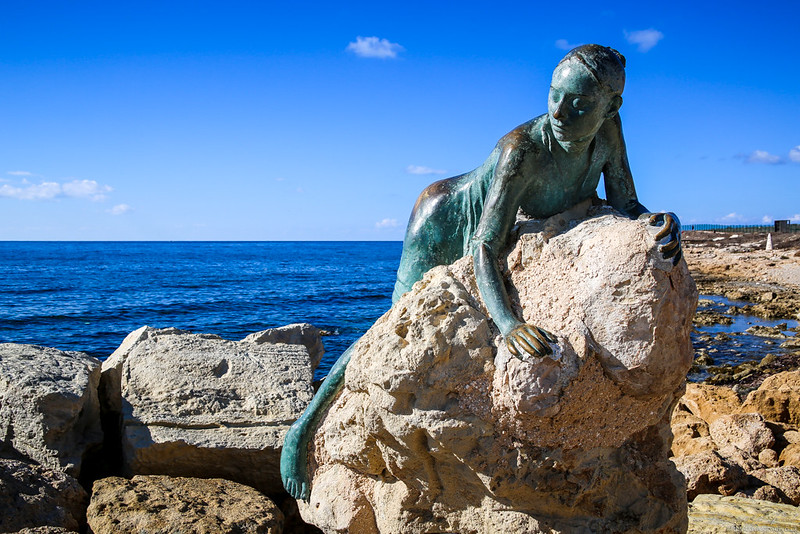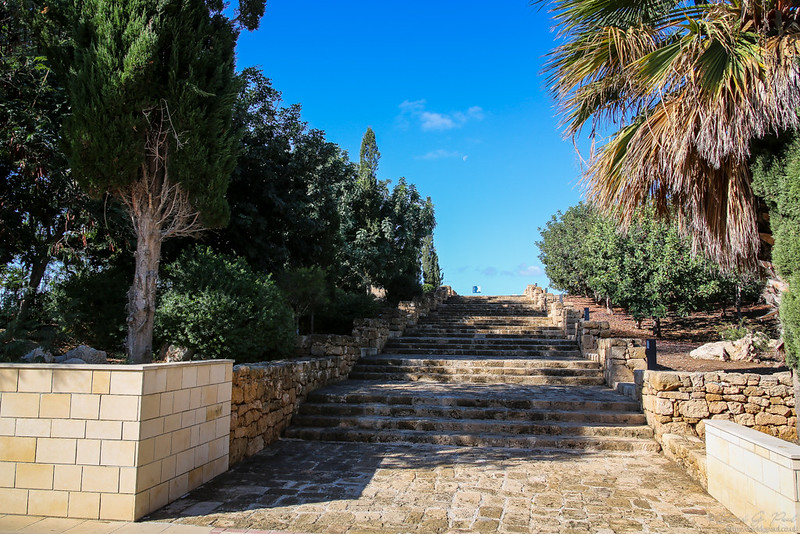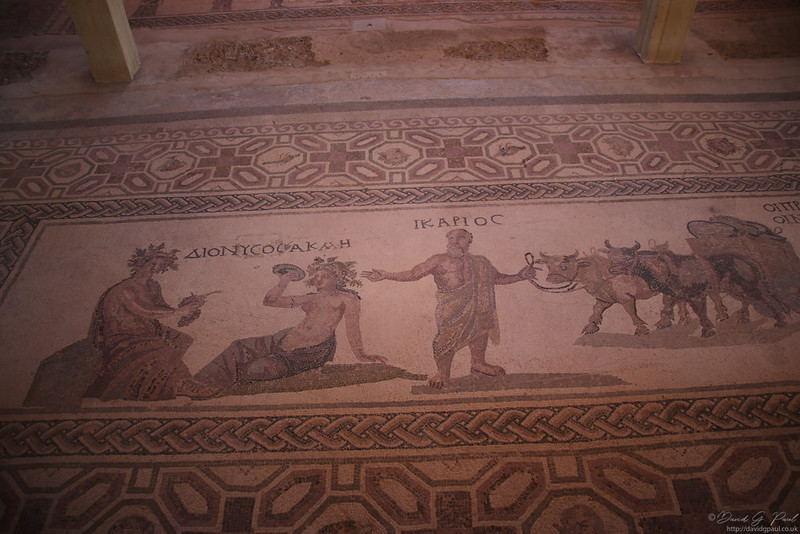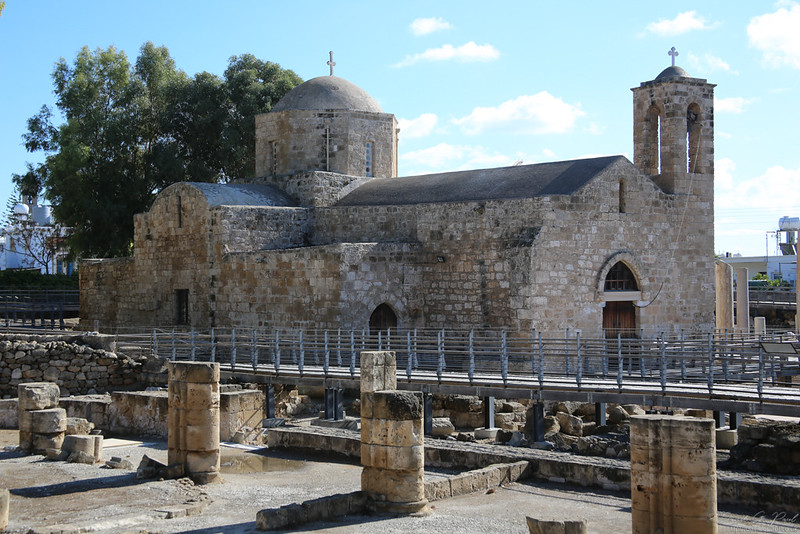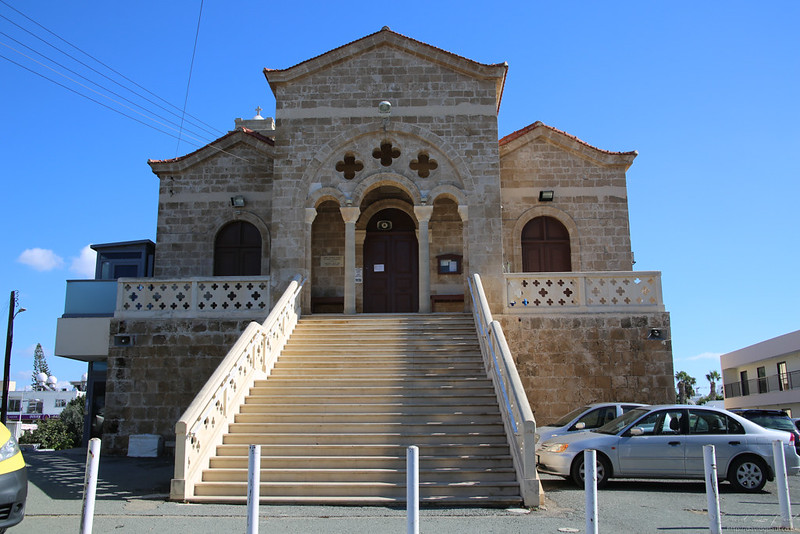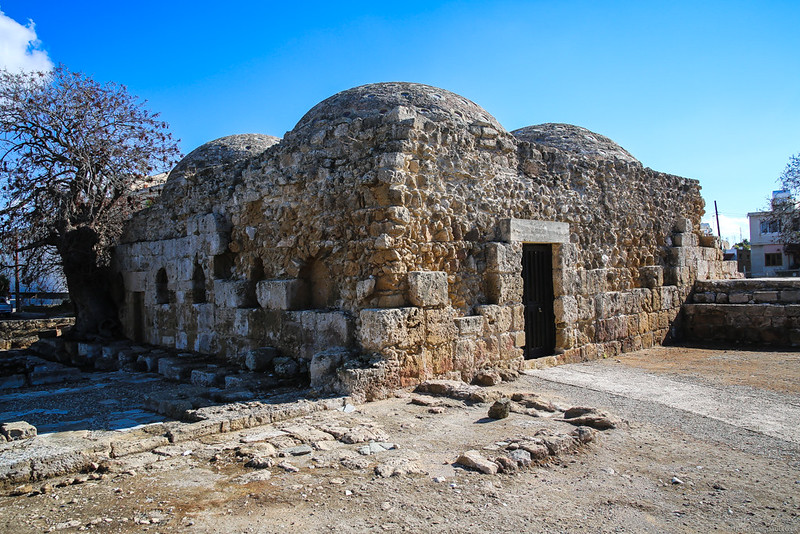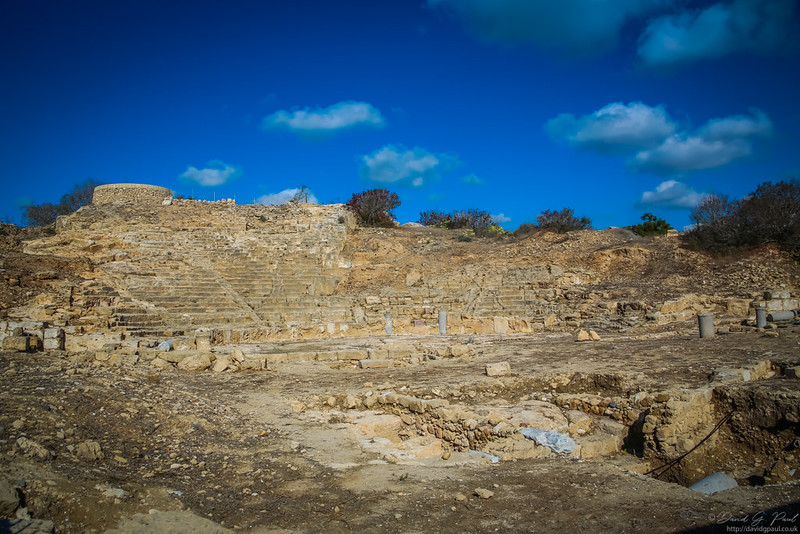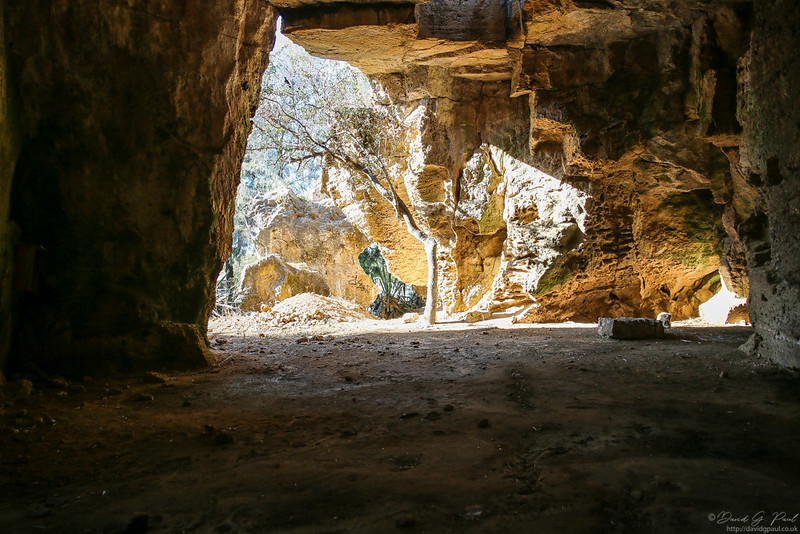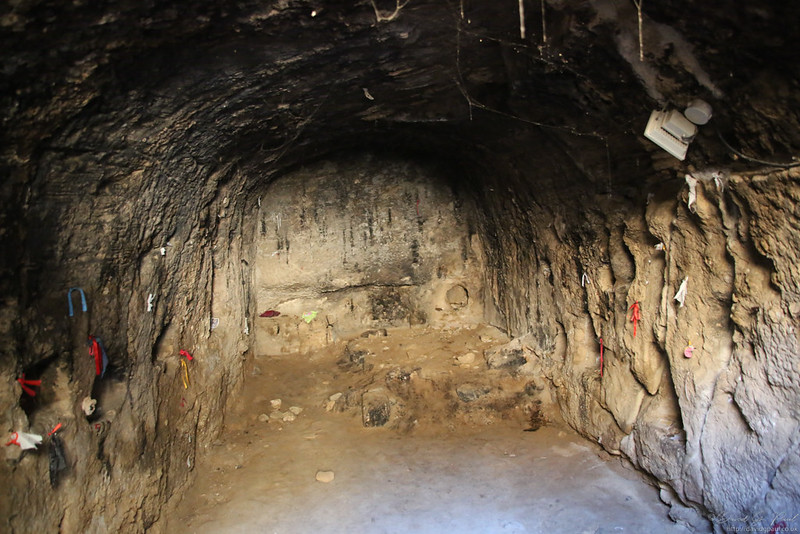Once upon a time, Cyprus was annexed by the UK whilst it was mostly inhabited by Greeks, but also a fifth of the population were Turkish. The Turkish part of the population supported British rule, but the Greek portion wanted the island to be returned to Greece. When Cyprus gained its independence in 1960, it became the Republic of Cyprus, but the division in the population grew. The Turks now felt that the island should be annexed by Turkey, and the Greeks felt the same about Greece. When amendments in their constitution were proposed that would strip the Turks of their rights, it escalated into violence that forced the smaller Turkish part of the population out of their homes. This was a time known as Bloody Christmas.
In 1974 a military coup d'état took place to try and force the issue of annexation by Greece, and this was met by an invading force from Turkey. They succeeded in taking approximately a third of the island, and that today is known as the Turkish Republic of Northern Cyprus. It is a state not recognised by the Republic of Cyprus, the European Union, or the United Nations. This means that travel to and from there can have complications, even more so during these COVID-19 times, and unlike the rest of the island, it uses Turkish Lira as currency.
If all had gone to plan, that is where I would have been travelling to today. Instead, I moved my plans for exploring Paphos to today. Whether or not I’d ever get to visit the North now was in question - it seemed unlikely any tours into the north would start up again until July, so even with my return visit it’s unlikely I’d be able to cross the border.
I started my day off with a run towards Paphos and photographed a couple of buildings. This turned out to be a good opportunity to find the bus stop for tomorrow’s journey to Limassol. It wasn’t that hard to find, and was in fact a place I’d passed by accident when out running on that first afternoon.
After breakfast I began walking to the Tomb of the Kings, an archaeological site close to the coast. It wasn’t that difficult to find the main entrance due to having passed it before. This was €2.50 to enter, which seems a bit of a bargain considering the size of the grounds. I started off with the first tomb I saw, and photographed the inside. The ground was a little flooded in places, and the walls were lined with alcoves and small rooms. From there I found another I could go down some stairs into, and I was starting to realise you could go more or less wherever you wanted, but at your own peril. It was then I started to draw comparisons to the workers' tombs in Giza.
After I’d done a few tombs I wandered around for a while, not finding any more on the southern part, but finding a fence which beyond it was the sea. I followed this for a while and then came back to more tombs. Many of these were quite similar once inside, but some appeared like clusters of caves from the outside. The sun however, was incredibly warm already even though by this time it was barely past 09:00.
Some of the tombs I was coming across now were in sunken courtyards with pillars, descending into these meant some respite from the sun. Some were more difficult to get into due to flood water from yesterday, but even in those cases there were ways past it. However, I was constantly torn between wanting to make sure I’d seen every little detail, and being too warm to want to do anything. I was trying to stick to a schedule though, and this was only the first sight of the day, so I tried to judge what was worth seeing from a distance, and then getting closer if I thought it warranted it.
Eventually I finished looking around these tombs, so I left and started the 2.5 kilometre hike to the Archaeological Park of Nea Paphos. This part of the route I found familiar - these were places we’d passed during the pickup part of yesterday’s tour. I remembered the Roman Hotel looking like it was made from old stone, and the strange flume-like structure that arced above the road there. This whole area was under heavy construction, and Fabrica Hill was fenced off from this side. I passed Agia Solomoni Catacomb and decided I may as well have a look to save time later. I peered down over the railings and could see all the rooms were locked up. I wondered if they’d be open later, so decided to carry on.
I tried a couple of times to find the entrance to the Archaeological Park, but each road that Google Maps and maps.me tried to send me down was not a way into the park, but looked like maybe they could have been potential exits. I decided the actual entrance must be near Paphos Harbour so I carried on walking until I reached the sea at Kato Paphos. I could smell the salt of the water, a familiar scent I’d not come across now for so long.
I could see Paphos Castle, and as that was the farthest point on this peninsula, it made sense to go there first. I stuck to the shade where I could, having already drunk half of the water I’d got with me. I wasn’t sure how much longer I’d need it to last before I could get more. The castle is close to the sea, with sea water being fed into a moat, and a wooden bridge extending across to the entrance. It’s €2.50 to enter, but once in there isn’t that much to see. There’s an art installation on the ground floor, and up some wooden steps you can get onto the roof and see out across the harbour and all of the ships. Unfortunately my FFP-2 mask snapped as I entered the castle, but they didn't seem bothered by me having to hold it in place.
Just west of the castle is a bronze figure of a woman clinging to a rock, called Sol Alter, and was sculpted by Yiota Ioannidou. The steps to the side offered no shade from the sun, so I decided once I was inside the park I’d sit down for some more water.
Entrance to the Archaeological Park is €4.50. I did think the Department of Antiquities offered a combined ticket for multiple sights, but I didn’t see any mention of this there, or at any of the other sights I’d visited. Once inside there are steps up to the excavations, and the trees lining this offer some shade. I didn’t linger long, just enough time to swig some water, and then carried on moving.
Carrying straight on I saw the ruins of the House of Aion, House of Dionysus, and the Villa of Theseus. Each of these are named so because of the imagery found there. Around this area you can see some very impressive mosaics that are exposed to the sun and the rain, and whatever the weather can throw at them. However, the colours of them are still very clear, and the images incredibly detailed to show just how skilled the craftsperson would have been. There were pillars and parts of walls to be seen as well.
Further into the park there is a building, and inside this you can walk around raised walkways to see many different mosaics that have been found. Out the other side of this building, it’s a short walk to the Paphos Lighthouse. You can go up the first set of steps, but can’t go inside in order to ascend to the light. Initially I continued onwards, along the city wall, but I felt there was nothing to see so eventually I turned back.
The Roman Odeon is next, and after that I followed a sign pointing towards something else, but it seemed it was actually just an exit at the end of a long, winding path. I did however see a few lizards scurrying to hide under rocks though. The next time I saw any life around there was when I sat down on a bench in the shade to eat some crisps. I then felt something against the back of my leg, and then realised it was a cat when I heard it.
I continued on and photographed the Forty Columns Fortress, which completed the sights in this park. It was just after midday, but I wasn’t sure if they’re that keen on people eating sandwiches in there so I left, and bought a white chocolate and strawberry ice cream to cool off as I walked onwards to the next sight.
I reached Agia Kyriaki Chrysopolitissa and found that the walkways across the archaeological sites to reach the Byzantine church were roped off. It seemed this had been closed temporarily due to the pandemic, so would miss out on seeing the mosaic inside. I sat down outside, shaded from the sun, and ate my lunch. When I was ready to resume, I carried on towards the Church of Panagia Theoskepasti, but stopped by a supermarket, showing my vaccination status to gain entry, to buy one litre of chilled water for 20.30. It was cheap enough and meant dehydration wouldn’t be a problem. It felt strange seeing Christmas decorations about, and the shops selling mince pies. It was like summer outside, and yet Christmas was almost upon us - just like when I’d visited Morocco. That too had been in November, and I started to feel that some of the sights here in Paphos reminded me a little of what I’d seen in Marrakesh, though I wasn’t completely sure why.
When I reached the church, I climbed the steps to the doors. This one had a sign saying you could not enter unless ‘properly dressed’. I knew that it meant with your knees covered, and as I was wearing shorts it meant I should not enter. I sat down in the shaded part of the steps, and checked my map whilst sipping on more water. I'd got around three hours until sunset, and I knew I didn't need all of that. At most, I probably only needed another hour.
The closest sight now was the Medieval-Ottoman Baths, so I walked to those and found that those too were temporarily closed due to the pandemic. I did realise though that these baths would be a hammam, and a building I’d seen near the Municipal Park on my run earlier would also have been one of these.
The next few sights were in close proximity to each other as well, but their positioning meant that no matter which way round I went, I’d have to backtrack at some point. I started off with the Hellenistic Roman Theatre, and found that by going up Fabrica Hill you could look down into it, even though you couldn’t go around it. Up on that hill I also found that there were stairs you can take down into the cave systems below where it’s cooler. I hadn’t expected there to be so many rooms down there, but one room led to another and another until I found that this led to the other side of the fences I’d seen earlier. So what seemed strange was that from the road you couldn’t enter them as it said there was construction work, but from the hill itself there’s no indication whether or not you’re supposed to be able to go inside.
I worked my way back around onto the top of the hill, and realised the strange flume-like structure seemed to be a footbridge that is under construction. At the bottom of the hill it’s then a short walk to the Agioi Anargyroi church, but again you can’t, or rather shouldn’t, go inside wearing shorts. I didn’t want to be disrespectful to the locals' wishes, so I didn’t go in. Instead, I walked back to the Agia Solomoni Catacombs and found you could go down to them, just not inside most of the rooms. They seemed very similar to the tombs I’d seen in the morning, but here they were decorated heavily with ribbons, and more on the roots of a pistachio tree. Behind the tree is the Chapel of the Seven Sleepers, which has ribbons pinned to the walls, and small pictures hidden away in little alcoves. One room, almost like an antechamber, also had a lot of pictures hanging from the walls as a shrine to Agia Solomoni, the Jewish martyr who was forced to watch her seven sons be killed by Antiochus IV for refusing to eat pork.
I’d now seen all the sights I knew about in Paphos, and had a five kilometre walk back to the apartment. I knew it would be a very warm walk uphill, so I took it slowly, and was sure to periodically sip on more water. I was about two thirds of the way back when the strap on my camera snapped. The camera swung out in an arc, the other end of the strap caught on my backpack for a moment, slowing it down slightly. It was a quick panic, but it'd given me enough time to react. I turned with the camera and reached out to grab it. I hoped I wasn't about to fumble it, but my hand found the lens and I clutched it hard and pulled it back towards me. Luck was with me - I'd saved my camera before any damage was done. If my camera had hit the hard paving stones below it would have surely smashed and with my other DSLR body at home, I'd be without a proper camera for the rest of the trip. Of course I'd have used my iPhone instead, and the camera on them is surprisingly good now. However, it wouldn't have given me the same range and flexibility.
When I got back to the room, I made a temporary repair to the strap by shortening it, and tested it to make sure it'd hold for the rest of the trip. It seemed good enough, but I'd be wanting to get a replacement strap off eBay before taking it on any other trips. Satisfied my work was done, I went to the pool outside. The water was incredibly cold, far colder than I was expecting, so then spent the next twenty minutes drying off in the sun. I looked at my watch, and found I'd done twenty miles on foot today. For the remainder of the evening I relaxed in the room, and eventually made a tuna pasta bake with vegetables using the ingredients I’d bought from the supermarket a couple of days before. In the morning I would be moving on to Limassol, but I was not yet in any rush to pack.
